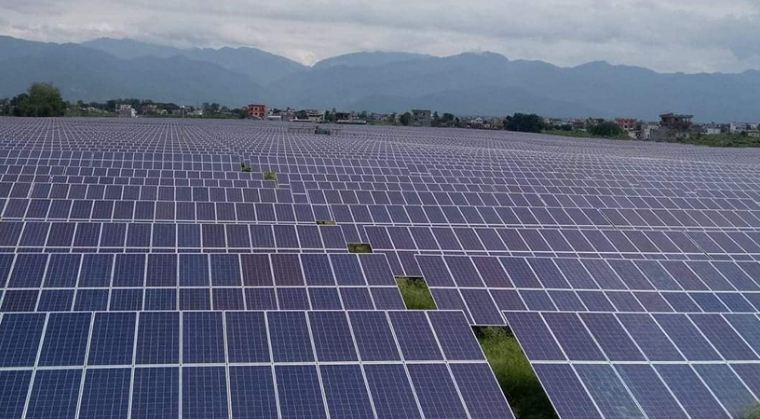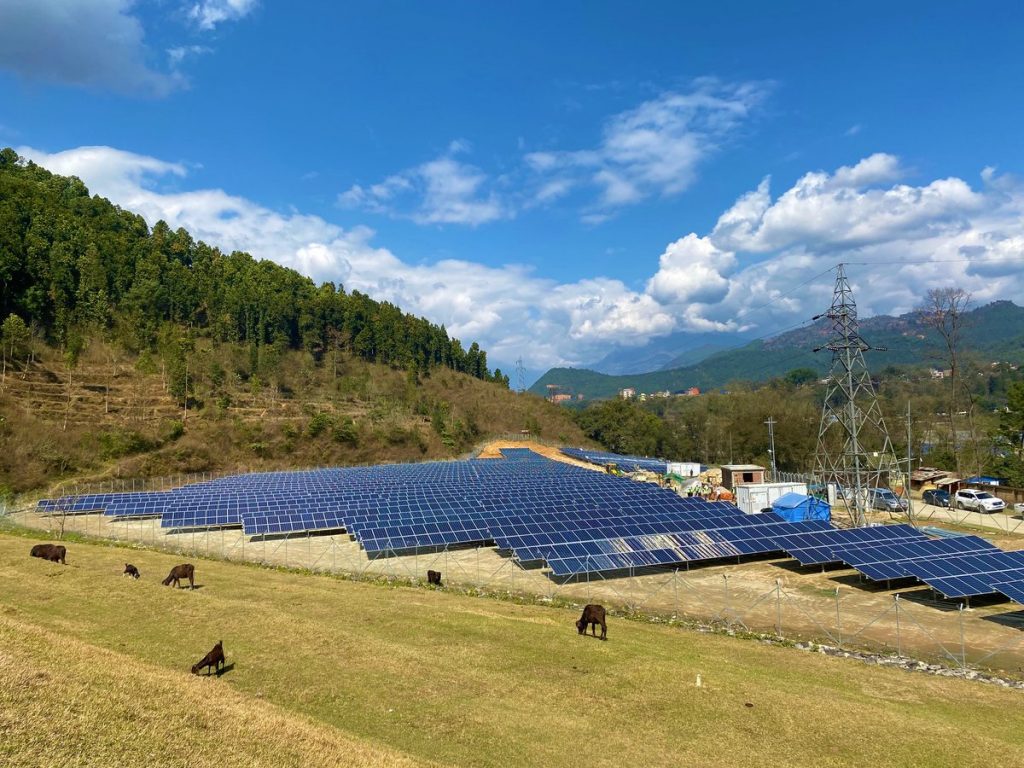A Basic Insight into Solar Farm

With the advancement in Science and technology, mankind has exploited the resources available at its disposal. To meet the ever-increasing energy demands, different energy harnessing mechanisms have been developed such as Hydro power plants, Thermal power plants (include Coal plants, Diesel plants), Nuclear power plants. Fossil-fuel powered plants have been used for well over a century as the main source of energy around the world. Emissions from fossil-fuel powered plants are detrimental to the environment producing greenhouse gases which are the main cause of global warming. So, the world is attempting to move on from fossil-fuels to a more sustainable form of energy. Solar energy, being the most abundant form of energy, could be the answer to the existing energy demands and environmental pollution.
The development and improvement in solar technology has resulted in significant increment in the efficiency of solar cells from about 8% in the past to about 15-20% at present. This improvement has allowed the extraction of more solar energy at cheaper rate. In recent times, the world focus is on the extraction of solar energy at a commercial scale that could compete with the existing fossil-fuel powered plants. One of those methods for mass solar energy extraction is Photo Voltaic Solar Farm.
Solar farms are large-scale, ground-mounted solar installations. They use photovoltaic (PV) panels or other means of collecting solar energy, like concentrating solar systems, to harness the sun’s power. Solar farm typically consists of interconnected solar panels placed on acres of land or on the surface of lake, racking, cables, inverters, transformers, and a power line or substation to deliver the power to the electric transmission grid. Since, utility-scale solar farms have capacity in megawatts, they operate in day time only and are shut at night with no power backup. For the construction of Solar farm, at first, the location is studied and surveyed for higher solar irradiance. The location selected can be desert, land or surface of lake. The land is then, leased for a period of about 25-40 years. The land leased for solar farm are generally uncultivable or barren. The construction process is simple i.e., just the installation of solar panels, inverters and transmission lines and could be completed in matter of months. However, the government regulations, paperwork could pose some setback in time. The cost of Operation and Maintenance of solar farm is comparatively low than that of other Plants due its simple design and static components. The O&M period is generally 3 to 4 times a year.

Types of Solar Farm:
Based on the capacity of Plant and the consumers it serves; solar farms can be categorized in two types:
- Utility Scale Solar Farm:
Utility Scale Solar Farms are mega projects with generation capacity ranging from 1MW to 2GW. They typically cover hectares of land which are generally leased instead of purchase for cost reduction. They serve large number of consumers, typically from 300-500,000 homes depending upon their generation capacity. Energy generated is sold to the utility buyers as per Power Purchase Agreement (PPA).
- Community Solar Farm:
These solar farms have capacity of about 100KW-5MW. They are built at the vicinity of consumers and provide energy to only those who have paid for the share of power.
Global Status of Solar Farm:
The low cost of PV cells and government subsidy has paved the way for the commercial scale installation of solar farms. The number of Solar farms across the world has surged massively at present times. Moreover, the size of Solar farms has also increased progressively with new record in capacity being made frequently. According to Wiki Solar, the generation of Utility Scale Solar Farm reached 96GWAC by 2016, which represented 1.3% of the total global power.
Some of the largest Solar Farms are listed in tabular form below:
| S.No. | Name | Country | Capacity (MWAC) | Size (km2) | Year |
| 1. | Bhadla Solar Park | India | 2,245 | 57 | 2020 |
| 2. | Huanghe Hydro Power Hainan Solar Park | China | 2,200 | 2020 | |
| 3. | Pavagada Solar Park | India | 2,050 | 53 | 2019 |
| 4. | Benaban Solar Park | Egypt | 1,650 | 37 | 2019 |
| 5. | Tengger Desert Solar Park | China | 1,547 | 43 | 2016 |
| 6. | Noor Abu Dhabi | UAE | 1,177 | 2019 | |
| 7. | Mohammed bin Rashid Al Maktoum Solar Park | UAE | 1,013 | 2020 | |
| 8. | Kurnool Ultra Mega Solar Park | India | 1,000 | 24 | 2017 |
| 9. | Datong Solar Power Top Runner Base | China | 1,000 | 2016 | |
| 10. | NP Kunta | India | 900 | 2020 |
Solar Farm in Nepal
Nuwakot Solar Power Station is the largest solar plant of Nepal. The solar panels are installed in six locations within the premises of Devighat Hydro Power Station owned by Nepal Electricity Authority. Energy generated from the Plant is connected to the 66 kV sub-station of Devighat Hydropower Station.
The construction of Plant is contracted to Risen Energy Co. of China. It is also responsible for Operation and Maintenance of the Plant for first five years from generation time. After the contract expires, the Plant is handed over to Nepal Electricity Authority.
The construction began in 2018 with completion target of 1 year. NEA had planned to install 15MW by April 2020 which was again delayed due to nationwide lockdown to prevent the spread of COVID-19 pandemic. As of June 2020, only 1.25 MW has been installed.

Government of Nepal, Ministry of Energy, Water resources and Irrigation, Department of Electricity has issued license for the construction of Solar Farms in different parts of the country, all of which are tabulated below:
| S.No. | Project | Capacity (MW) | Issue Date | Promoter |
| 1. | Grid-Connected Solar Power Project, Butwal , 33 kV S/S | 8.5 | 2076-02-14 | Ridi Hydropower Development Company Ltd. |
| 2. | Block No 1 Solar Farms Project | 5.1 | 2076-03-09 | Nepal Electricity Authority |
| 3. | Block No 2 Solar Farms Project | 8.3 | 2076-03-09 | Nepal Electricity Authority |
| 4. | Bel Chautara Solar Farm Project | 5 | 2076-03-18 | Solar Farm Pvt. Ltd. |
| 5. | Mithila Solar PV Power Project, Dhanusa | 10 | 2076-05-06 | Eco Power Development Pvt. Ltd |
| 6. | Som Radha Krishna Solar Farm Project | 4.4 | 2076-07-14 | Nepal Solar Farm Pvt. Ltd |
| 7. | Solar PV Pratappur | 5 | 2076-09-11 | National Solar Power Company |
| 8. | Chandranigahpur Solar Project | 4 | 2076-10-01 | Api Power Company Pvt. Ltd |
| 9. | Bhrikuti Solar Power Project | 9 | 2076-10-12 | First Solar Developers Nepal Pvt. Ltd. |
| 10. | Grid Connected Solar Project Block 4, Nuwakot | 1.37 | 2077-04-12 | Nepal Electricity Authority |
| 11. | Grid-Connected Solar Power Project, Dhalkebar, 33 kV S/S | 3 | 2077-04-25 | Sagarmatha Energy & Construction Pvt. Ltd. |
| 12. | Grid Connected Solar PV Project, Ramgram, Nawalparasi | 2 | 2077-06-11 | Saurya Bidhyut Power Pvt. Ltd |
| 13. | Grid-Connected Solar Power Project, Duhabi, 33 kV S/S | 8 | 2077-06-12 | Global Energy & Construction Pvt. Ltd. |
| 14. | Utility Scale Solar PV | 6.8 | 2077-07-06 | G I Solar Pvt. Ltd, |
| 15. | Solar PV Project Banke, block-2 | 10 | 2077-08-29 | Pure Energy Pvt. Ltd |
| 16. | Solar PV Project,Raniyapur, Block 1 | 10 | 2077-09-02 | Pure Energy Pvt. Ltd |
| 17. | Grid Connected Solar PV Project, Ganeshpur, Kapilbastu | 10 | 2077-10-2 | Positive Energy Pvt. Ltd |
Total capacity of all 17 projects is estimated to be 110.47MW




